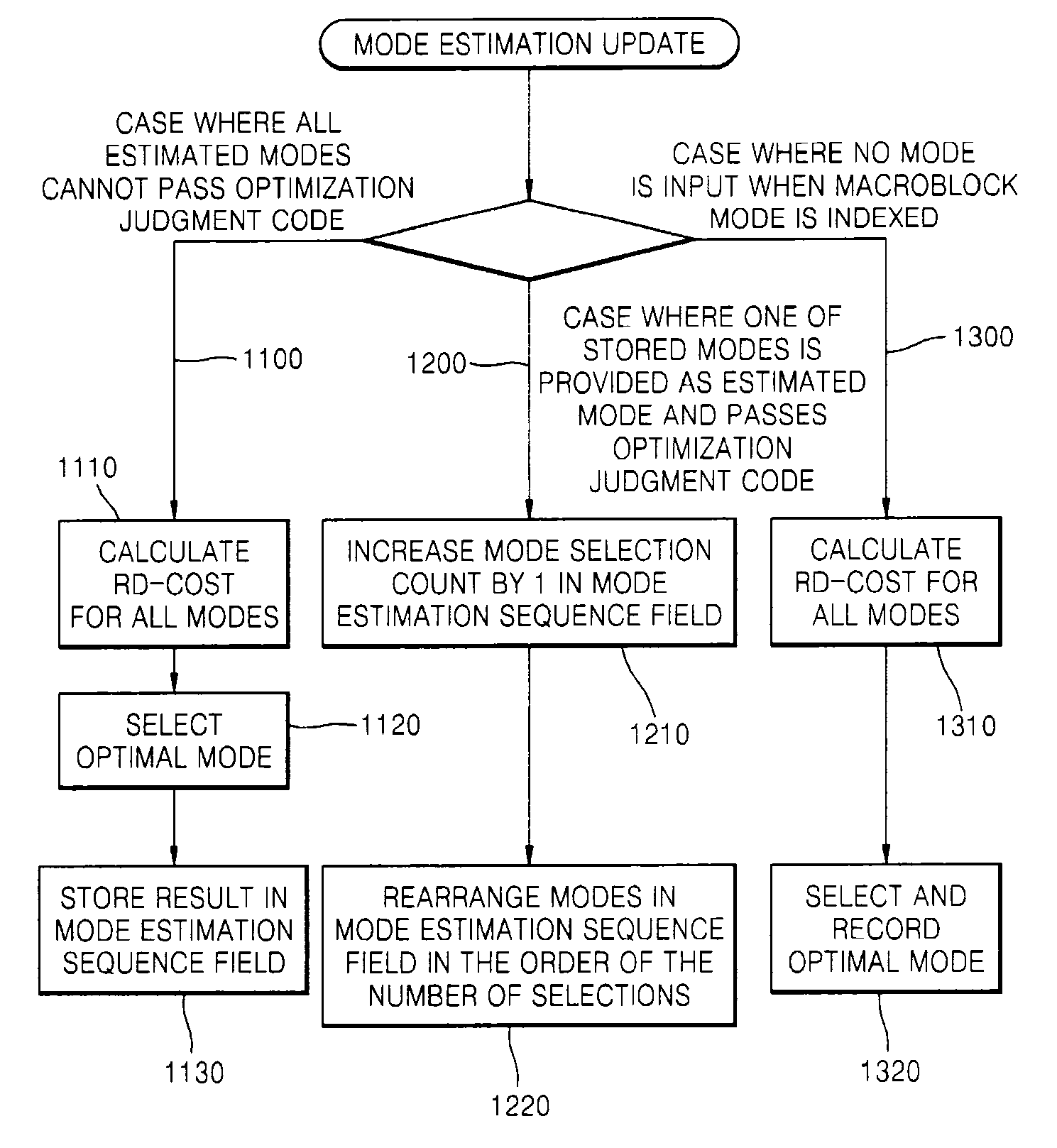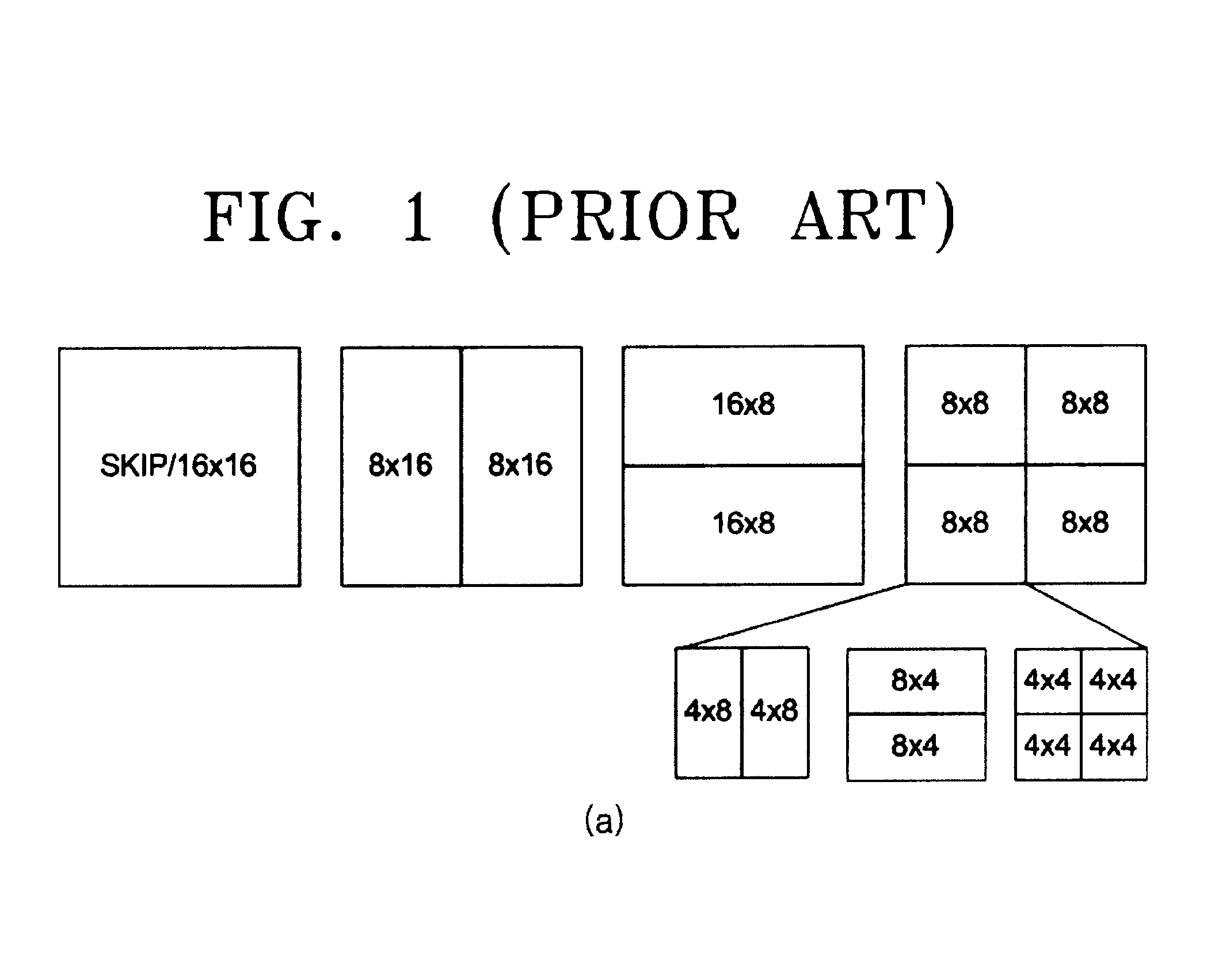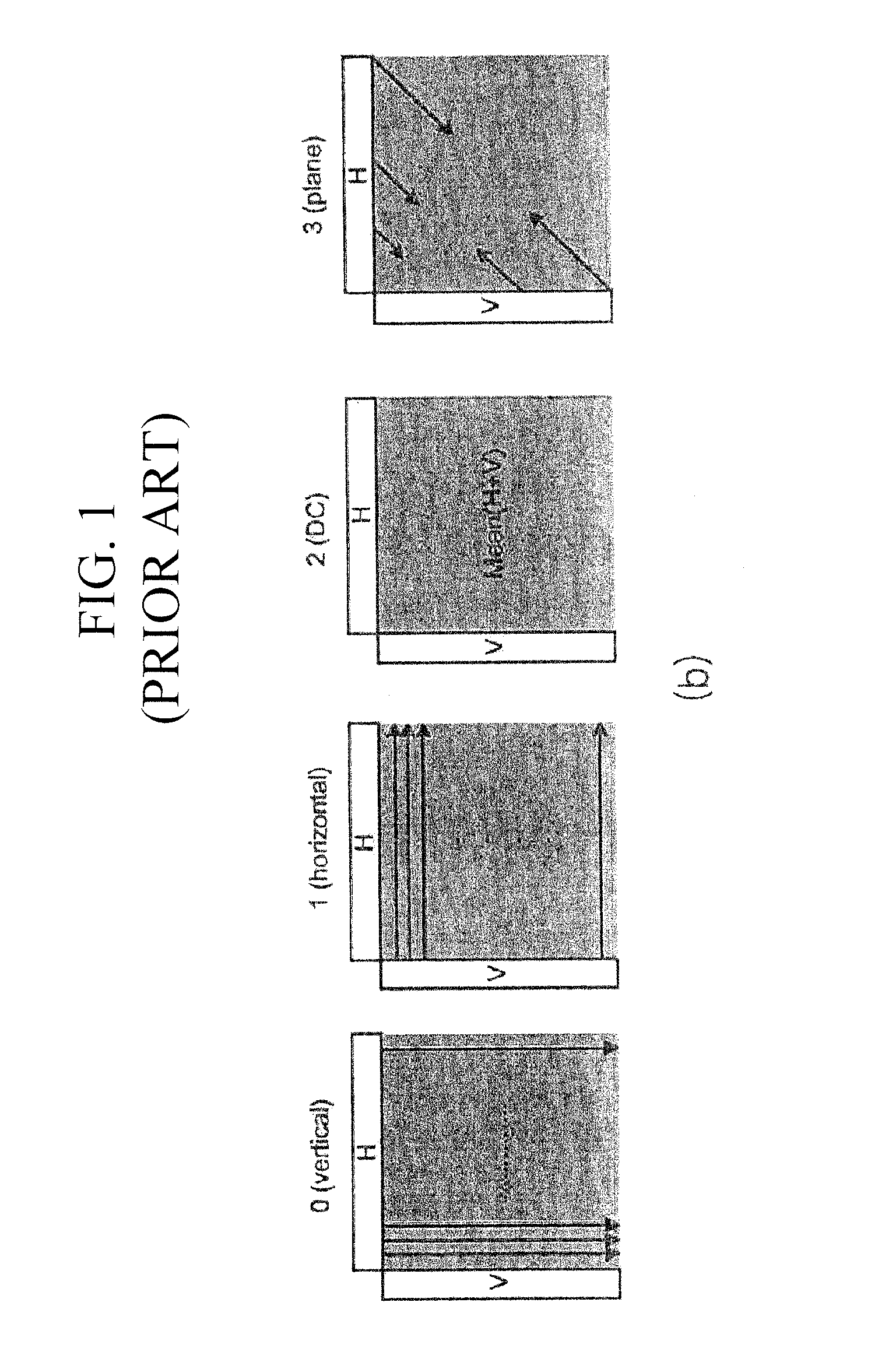Apparatus and method for estimating compression modes for H.264 codings
a compression mode and algorithm technology, applied in the field of approximation and method for estimating compression modes for h.264 codings, can solve the problems of reducing the compression efficiency of h.264 codings, affecting the performance of h.264 codings, and affecting the quality of h.264 codings, so as to achieve the maximum compression efficiency, reduce the compression coding time, and reduce the complexity of well-designed encoders proportional to the degree of freedom
- Summary
- Abstract
- Description
- Claims
- Application Information
AI Technical Summary
Benefits of technology
Problems solved by technology
Method used
Image
Examples
Embodiment Construction
Technical Problem
[0044]In order to solve the above-described problems, the present invention adaptively reconfigures a search sequence of coding modes by classifying and using statistical characteristics of an optimal coding mode according to temporal and spatial positions of a current encoding unit. In addition, while most conventional fast H.264 coding mode techniques described above set thresholds based on an intuitive criterion and limit candidate modes using the thresholds, the present invention actively adapts to a statistical characteristic change in terms of encoding of video data to be encoded by using an adaptive threshold based on an encoding error (cost function) experienced in already encoded adjacent encoding units.
[0045]Thus, the purpose of the present invention is to simplify and increase the speed of a complex mode decision process without significantly degrading image quality or reducing a compression ratio by correctly estimating a coding mode of each macroblock w...
PUM
 Login to View More
Login to View More Abstract
Description
Claims
Application Information
 Login to View More
Login to View More - R&D
- Intellectual Property
- Life Sciences
- Materials
- Tech Scout
- Unparalleled Data Quality
- Higher Quality Content
- 60% Fewer Hallucinations
Browse by: Latest US Patents, China's latest patents, Technical Efficacy Thesaurus, Application Domain, Technology Topic, Popular Technical Reports.
© 2025 PatSnap. All rights reserved.Legal|Privacy policy|Modern Slavery Act Transparency Statement|Sitemap|About US| Contact US: help@patsnap.com



